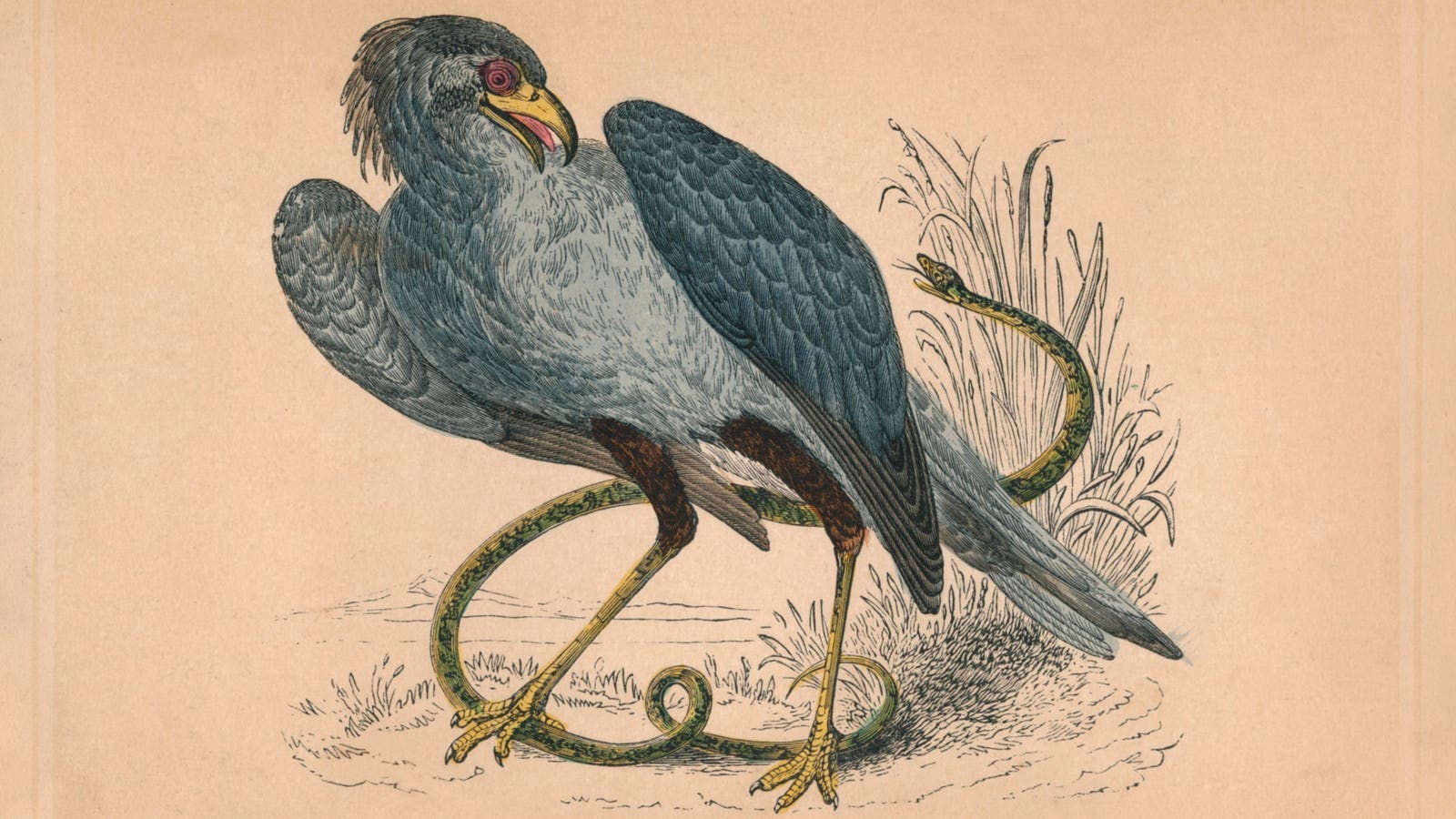This unique avian roamer of the African savanna gives new meaning to the term “strange bird.” Here’s why.
Getty Images
Birds of prey typically fit into a common mold: they are sharp-beaked, talon-wielding aerial hunters who attack their prey from the sky. The bald eagle is a good example of a bird of prey. The red-tailed hawk is another.
But not all raptors follow this script. Some are different – evolutionary oddities that break the mold. Perhaps the best example of this is the secretary bird: a long-legged raptor that doesn’t soar so much as stomp.
With its distinctive form and terrestrial hunting style, the secretary bird (Sagittarius serpentarius) is one of the most fascinating birds of prey on the planet. Here’s what science can tell us about it.
The Secretary Bird – A Raptor Like No Other
Known for hunting venomous snakes, the secretary bird uses its long, powerful legs to stomp prey with incredible speed and force.
getty
Standing nearly four feet tall with a wingspan over seven feet, the secretary bird resembles a crane more than a typical raptor. A cousin of eagles and hawks, it belongs to the order Accipitriformes but stands alone in its own family, Sagittariidae. It’s also the only bird of prey that hunts primarily on foot, and the only one known to stomp its prey to death, making it one of the most distinctive raptors in the world.
The secretary bird can cover up to 20 miles a day in search of its next meal. Its prey? Mostly snakes – venomous ones included. It also hunts lizards, rodents, small birds and even insects.
A 2014 paper published in Biodiversity Observations reported the dissection of a secretary bird that died after flying into a power line near Balfour, South Africa. Researchers found eight snakes and 13 grasshoppers in the bird’s digestive tract, likely consumed in a single day. The snakes included two spotted grass snakes (Psammophylax rhombeatus) and six cross-marked grass snakes (Psammophis crucifer). While based on a single specimen, the finding highlights the secretary bird’s ophiophagous tendencies.
When it spots a target, the secretary bird strikes with lightning-fast kicks, using its powerful legs to stun or kill its prey. Secretary bird kicks aren’t just fast, they’re explosively powerful.
In a 2016 study published in Current Biology, researchers trained a captive secretary bird named Madeleine to strike a rubber snake on a force plate. The bird delivered kicks with forces up to 195 newtons, roughly five times its body weight, in just 15 milliseconds (faster than the blink of an eye).
This combination of precision and power is crucial when subduing venomous snakes, where even a slight misstep could prove deadly for the bird.
A secretary bird eats a deadly puff adder in South Africa.
getty
Interestingly, the strike happens too fast for feedback from the bird’s own muscles and nerves to guide the movement mid-kick. That suggests secretary birds rely heavily on visual targeting and pre-programmed motor patterns to land their deadly blows. Scientists believe that understanding this behavior could even inspire new advances in fields like robotics and prosthetics.
The secretary bird’s most unusual adaptations are its legs. Long and powerful, they are armored with tough scales that help protect against snakebites. Its claws, while not as curved or fearsome as those of a hawk, are still sharp enough to grip prey.
Unlike its raptor cousins, the secretary bird rarely flies while actively foraging. It will take to the skies to roost in trees, moving between feeding grounds, or escape danger, but hunting is mostly done on foot.
With its long legs and vivid orange facial skin, the secretary bird is one of the most striking raptors in the world. Its common name has two proposed origins. One theory points to the long black feathers projecting from the back of its head, which reminded early European observers of quill pens tucked behind a scribe’s ear. Another theory traces the name to the Arabic phrase saqr at-tair, meaning “hunter bird” or “falcon of the hunt.”
Unlike sociable raptors (like the black kite), secretary birds are often solitary or found in pairs. They hunt during the day and return to their tree-top roosts at night. Their calls are more stork-like than hawk-like: deep, croaking barks that carry over the African grasslands.
One theory suggests the secretary bird’s head feathers resemble quill pens tucked behind a scribe’s ear, inspiring its common name.
getty
In many African cultures, the secretary bird symbolizes protection and vigilance. Renowned for its snake-hunting skills, it appears in folklore and is depicted on ancient Egyptian artifacts dating back to 3200 BC. Today, it features prominently on the coat of arms of both Sudan and South Africa. Historically, farmers even relied on secretary birds to help control pests.
Like many birds of prey, the secretary bird faces numerous conservation challenges. Habitat loss from agriculture and development has reduced its range and populations have declined in recent years. The bird is currently listed as Endangered by the IUCN.
Are you an animal lover who owns a pet, perhaps even a pet bird? Take the science-backed Pet Personality Test to know how well you know your little friend.









